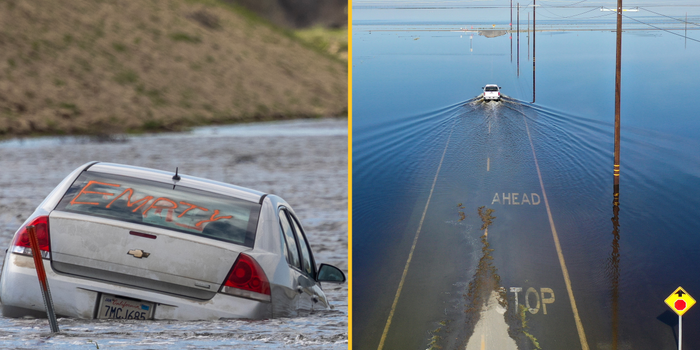A huge lake in California has reappeared suddenly – 130 years after it disappeared
Tulare Lake used to be one of America’s biggest bodies of water, but back in the late 1800s, colonialists drained the water in order to create arable farmland.
Prior to being drained, Lake Tulare was known to be the biggest freshwater body of water to the west of the Mississippi river.
However, the colonialists’ greed for arable land led to the lake being drained in order to create irrigation systems to support farming.
Vivian Underhill of Northeastern University explained that “the state of California’s desire to take [historically indigenous] land and put it into private ownership.”
Underhill said the “reclamation” of the land involved “either draining inundated land or irrigating desert land to create arable farmland.”
She explained that if you were the person to drain the land, you were “granted ownership of parts of that land.”
“So there was a big incentive for white settlers to start doing that work,” she continued.
The lake, which is known by the name ‘Pa’ashi’ by the indigenous Tachi Yokut tribe, was made up of mainly snowmelt from the Sierra Nevada mountains, rather than rainfall.
Freso, which is a town that was previously on the edge of the lake, receives just 10mm of rainfall per year.
It disappeared fully from 1890, and the water was used to irrigate land around the area instead.
“Now the valley is crisscrossed by hundreds of irrigation canals, all of which were originally built to take that lake water and put it onto irrigated fields,” she added.
However, last year, the lake suddenly reappeared.
“California just got inundated with snow in the winter and then rain in the spring,” Underhill explained.
“If you have a rain and snow event, the snow melts really fast,” she continued.
The combination of these events means that all the water collated in the depression where Tulare Lake once existed.
The impact on the locality was huge, with many birds returning to the lake’s shores.
“The return of the lake has been just an incredibly powerful and spiritual experience,” Underhill said of the lake’s return for Tachi Yokuts,
“They’ve been holding ceremonies on the side of the lake. They’ve been able to practice their traditional hunting and fishing practices again.”
For homeowners and farmers on the land, though, the lake’s return had devastating effects, with many losing their homes due to the flooding.
Indy 100 reports that attempts to drain the lake had begun, but Underhill said this might not be easy.
“Under climate change,” Underhill says, “floods of this magnitude or higher will happen with increasing frequency.”
“At a certain point, I think it would behove the state of California to realise that Tulare Lake wants to remain. And in fact, there’s a lot of economic benefit that could be gained from letting it remain.”
Despite attempts to drain the lake, it appears it disappeared again all by itself.
The Guardian reports that as of 14 March the lake is nearly gone, with “sprouts of grass and thick mud, but no signs of the body of water.”
Last year wasn’t the first time that Lake Tulare returned.
“It happened in the ’80s, it happened once in the ’60s, a couple of times in the ’30s,” Underhill explained. “This landscape has always been one of lakes and wetlands, and our current irrigated agriculture is just a century-long blip in this larger geologic history.”
“This was not actually a flood. This is a lake returning,” she concluded.
Related links:
Earth is spinning so fast it’s going to ‘lose a second’ for the first time ever
Four friends buy deserted island for £50k and transform it into paradise worth £11m
Walker claims they ‘spotted’ Loch Ness monster as pics show ‘ripple in the water’












































